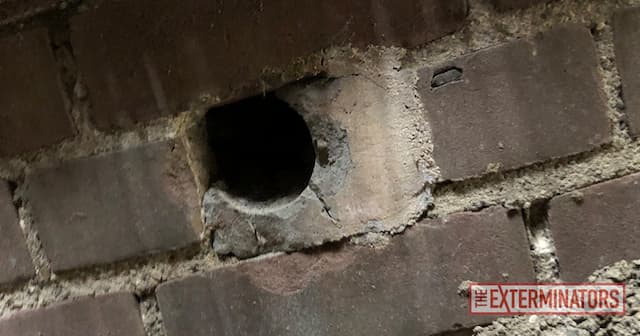People are afraid of rats because they can get into homes through the smallest gaps. Once they get inside, these smart rats can do a lot of damage and pose health risks. Finding out how rats get into your home and how to stop them is very important for keeping it rat-free. Let’s look into key points of entry for rats and how to successfully seal them.
- Points of Entry Rats are very good at twisting their bodies and can fit through spaces that look too small to be possible. Gaps around utility lines, vents, and drain spouts are common places for pests to get in. Additionally, rats use holes in the roof, soffits and crawl area entrances to get inside.
- House Rats: House rats are very good at climbing, and they often use trees, bushes, or power lines to get to roofs. After that, they look for weak spots like roof shingles that are missing or broken, gaps around chimneys, and holes in the roof where utility lines go through.
- Spain Rats: Spain rats, on the other hand, like to dig holes in the ground to get into houses. They use cracks in foundation walls, vents in crawl spaces, and gaps around sewer lines to get in. Rats can also get in through cracks under doors on the outside.
- Seal and secure: If you don’t want rats to get into your home, you need to make sure that all possible entry spots are sealed and secured. To begin, carefully check your property from top to bottom, inside and out. Check for holes, gaps, or openings. Pay extra attention to the foundation, roof, and places where utilities join.
- Sealing off the weather: Sealing off the weather is the best way to keep rats out. Make sure that the door sweeps on your outside doors are in good shape and that they seal tightly at the bottom. Fix any weather stripping that is broken around doors and windows to get rid of possible entry points.
- Fill in Gaps: Use steel wool or copper wire to fill in gaps and holes around pipes and vents so rats can’t get through them easily. Rats won’t be able to get through these holes after they are filled with glue or expanding foam.
- Take care of your roof: Check your roof often for holes, cracks, and broken shingles. Roof rats are quick jumpers and will use any chance they get to get into your attic. Fix any problems with the roof right away to keep them out.
- Crawl Space and Base: Look for cracks and holes in the crawl space and base. Rats can’t get in through these holes if you cover them with concrete, wire mesh, or something else that works.
- If you want to make it harder for roof rats to get to the roof, trim tree branches and bushes away from the outside of your house. Also, don’t store logs or other things against your house; rats can use these as hiding places.
- Get help from a professional. Sometimes it’s hard to seal off entry places, especially if rats have already gotten into your home. In these cases, it’s best to hire a skilled pest control service. Professionals who deal with pest control know how to find and effectively seal entry spots.
To sum up, keeping rats out of your home requires being alert, checking it often, and quickly sealing any openings they might use. By knowing the types of holes rats usually use to get in and using good closing methods, you can make your home a fortress against these unwanted guests. Consider calling a professional pest control service if you think you have a rat problem. They can take care of the problem completely and make sure your home stays rat-free.
Effective and affordable rat removal services in Bolton. Services are performed by insured and licensed exterminators. Technicians are properly fitted with the best equipment and rodenticides in the industry to keep the rat population under control and to get rid of them in no time.
